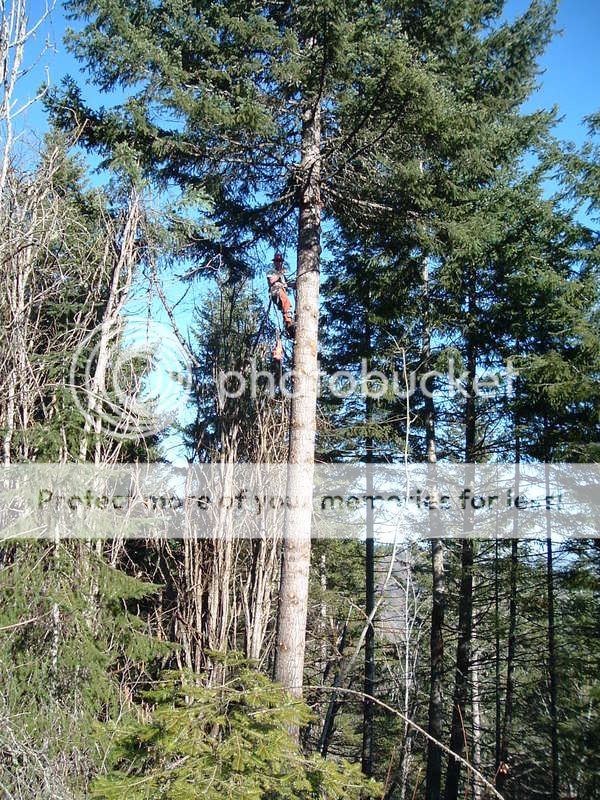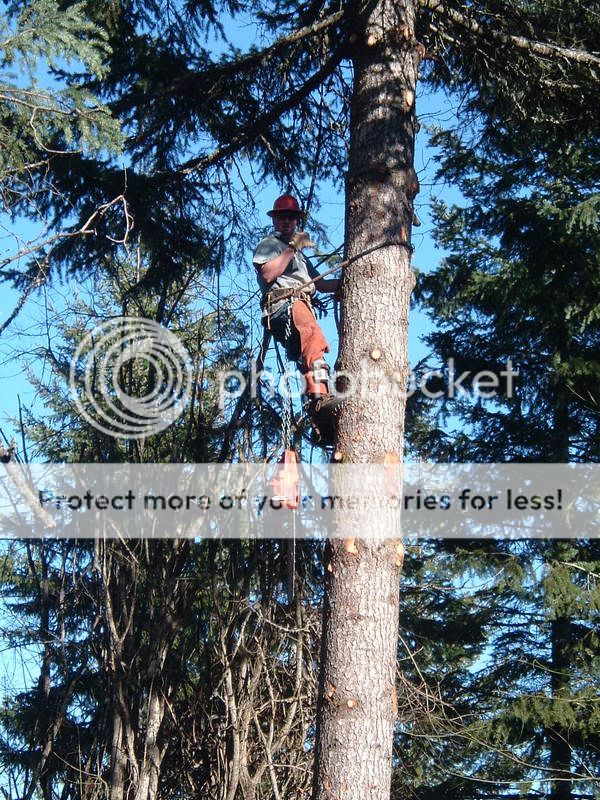Burvol
Bullbuck
Good for you man. Way to go.
About this tied in, setting a rope stuff, I could make some comments but I'll limit them. Thats the way hooktenders climb here as well, as do most tree guys. As long as your rope (lanyard, scare strap) has a steel core you do not need to be tied in as well, that is the WCB (OSHA equivelent) law here. Quit the crying folks, its the law.
I climb pretty much as you, but with a steelcore strap. I carry a climbing line coiled up and clipped to my saddle, its easier to come down on the rope. Also the rope doesn't get branches on it.
Yes, I know, its not good for trees to be spurred, admitted, but its a safe way to climb. I often drive by some firs I sidelimbed beside a powerline a few years back, they are doing just fine. When you are climbing, hold your lanyard with both hands, instead of the tree, if you gaff out you will not go far at all, been there.
And for what its worth, I have never set a rope in a tree, ever, and I have climbed thousands of trees. Some to kill, some to prune. More than one way to skin a cat. Make sure your spurs are sharp, get a steelcore and best wishes.
I kind of took the hook tender approach, just go up the tree. And yes, I was climbing with a steel core lanyard.
Last edited:


























































